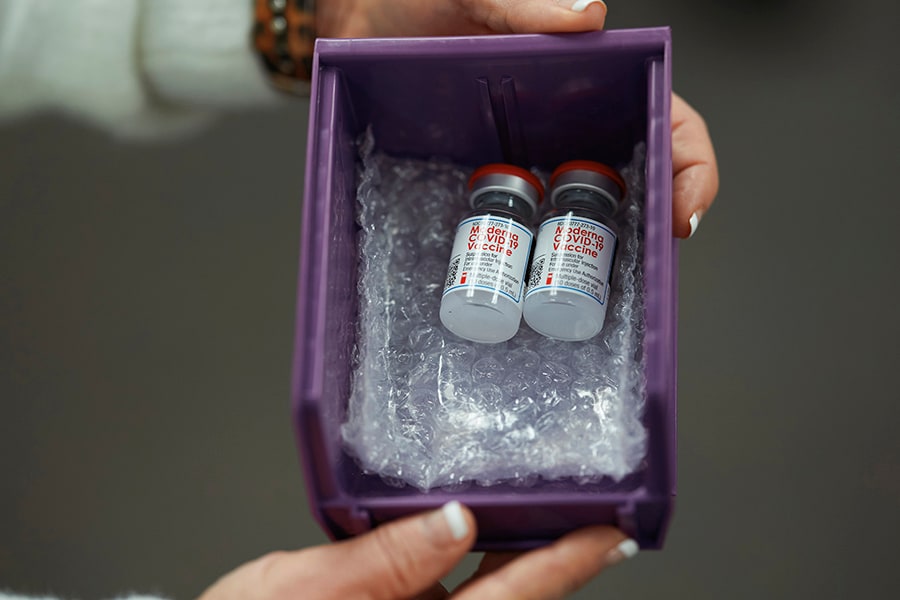
What the vaccine side effects feel like, according to those who've gotten it
13 percent of the recipients aged 18 to 55 had a bad headache after taking the Pfizer vaccine while 16 percent of those who took the vaccine, made by Moderna, had a reaction strong enough to prevent them from going about their daily routine
 Vials of the Moderna COVID-19 Vaccine are displayed at Titus Regional Medical Center in Mount Pleasant, Texas on Dec. 21, 2020. About one in six people who received the Moderna vaccine in late-stage trials had a reaction that kept them from going about their daily routine. (Cooper Neill/The New York Times)
Vials of the Moderna COVID-19 Vaccine are displayed at Titus Regional Medical Center in Mount Pleasant, Texas on Dec. 21, 2020. About one in six people who received the Moderna vaccine in late-stage trials had a reaction that kept them from going about their daily routine. (Cooper Neill/The New York Times)
Two and a half hours after being injected with a COVID-19 vaccine, Dr. Taneisha Wilson was hit with the worst headache of her life.
In her home office in Cranston, Rhode Island, Wilson, 36, an emergency physician with a constitution she calls “horse-like,” laid her head down on the desk. Fighting a wave of nausea, she let out an involuntary groan loud enough to be heard by her husband in a room down the hall.
“Are you OK, babe?” he called.
“It felt like I got smacked,” Wilson recalled in an interview.
That is not how most people who get the vaccine feel afterward, but reactions like Wilson’s were not uncommon in the clinical trial results of the two COVID vaccines now being distributed across the country. Pfizer, the company that makes the one she received, reported that some 13% of recipients ages 18 to 55 had a bad headache after the first dose. About 16% of those who received the other vaccine, made by Moderna, in a late-stage trial had a reaction strong enough to prevent them from going about their daily routine.
©2019 New York Times News Service




